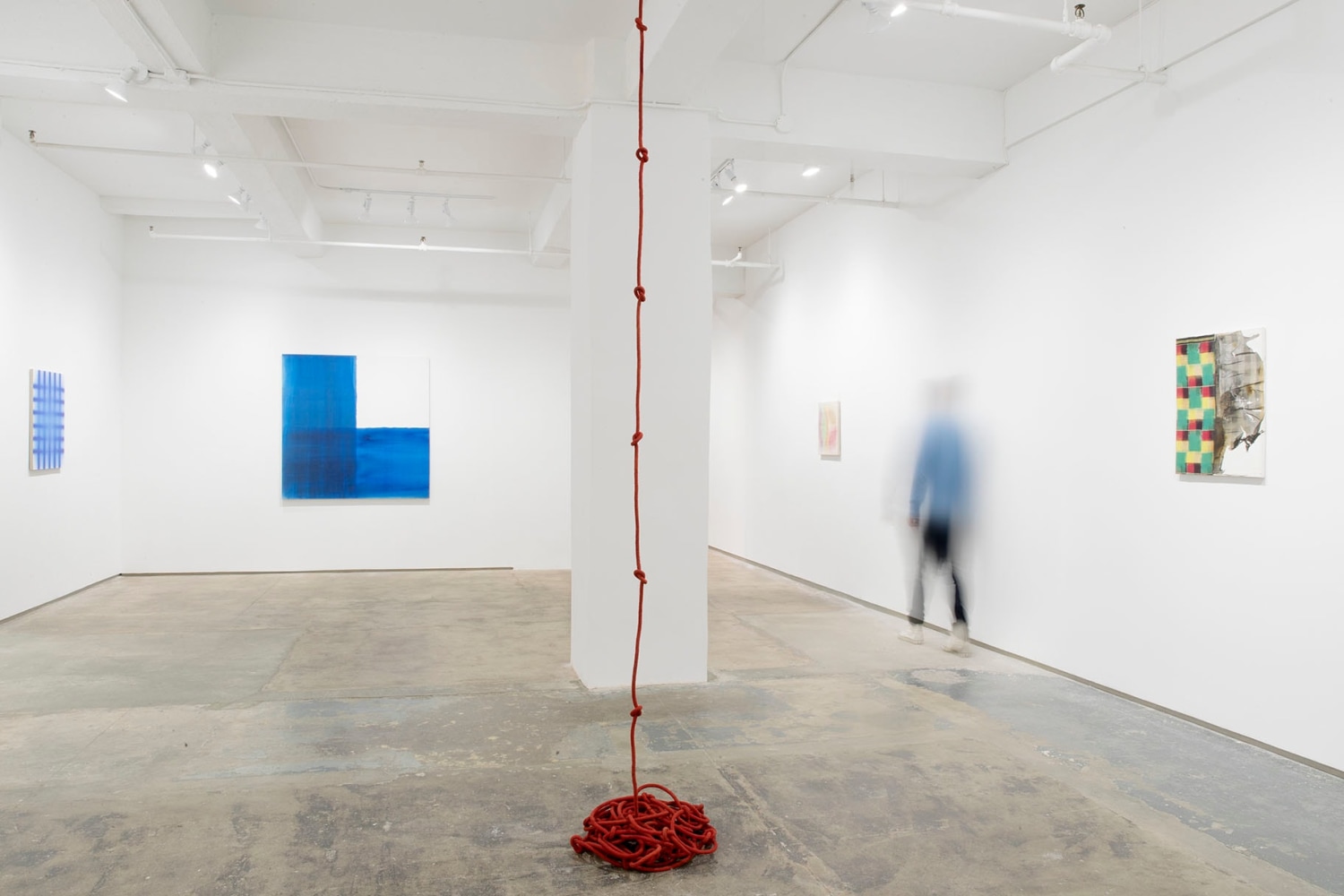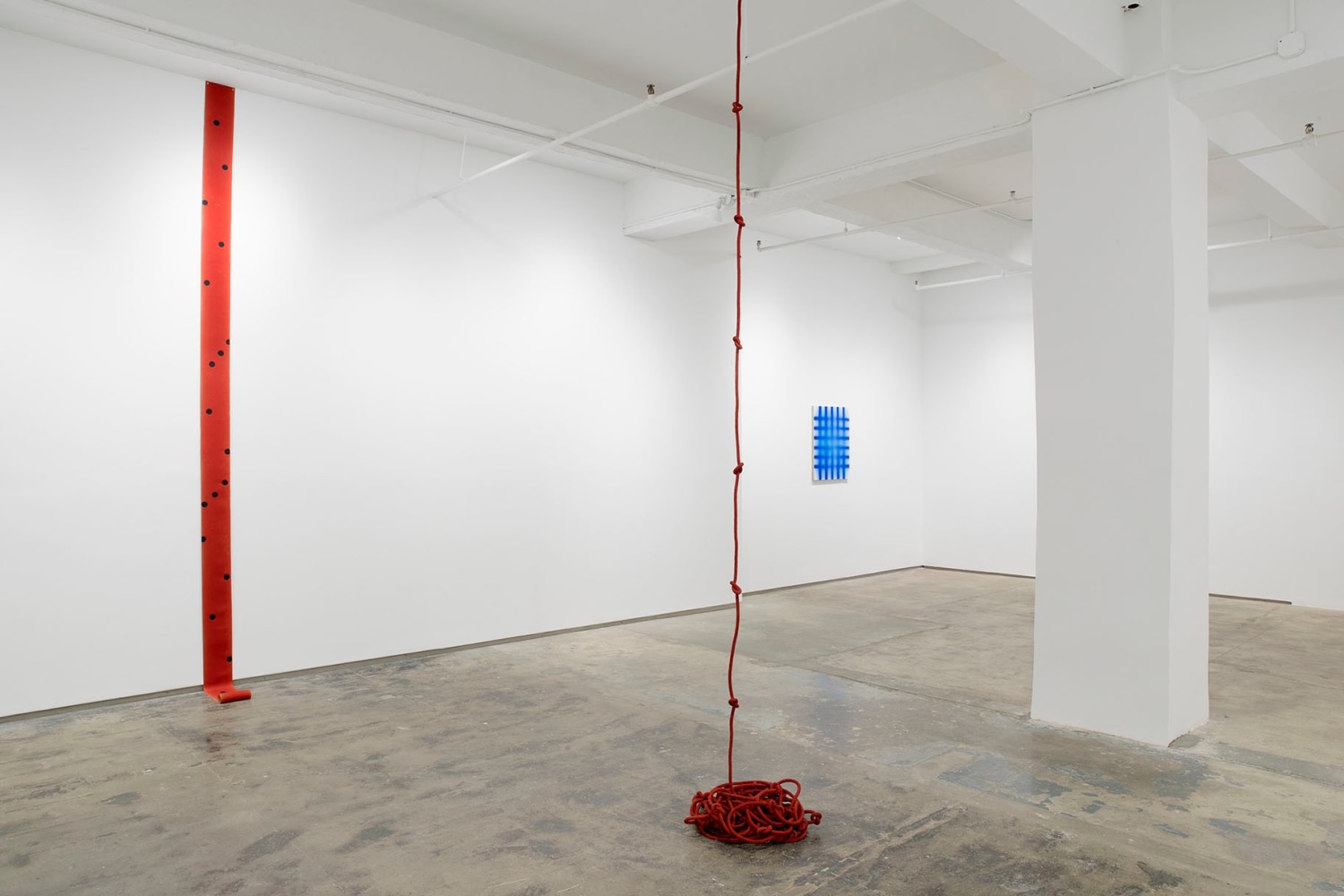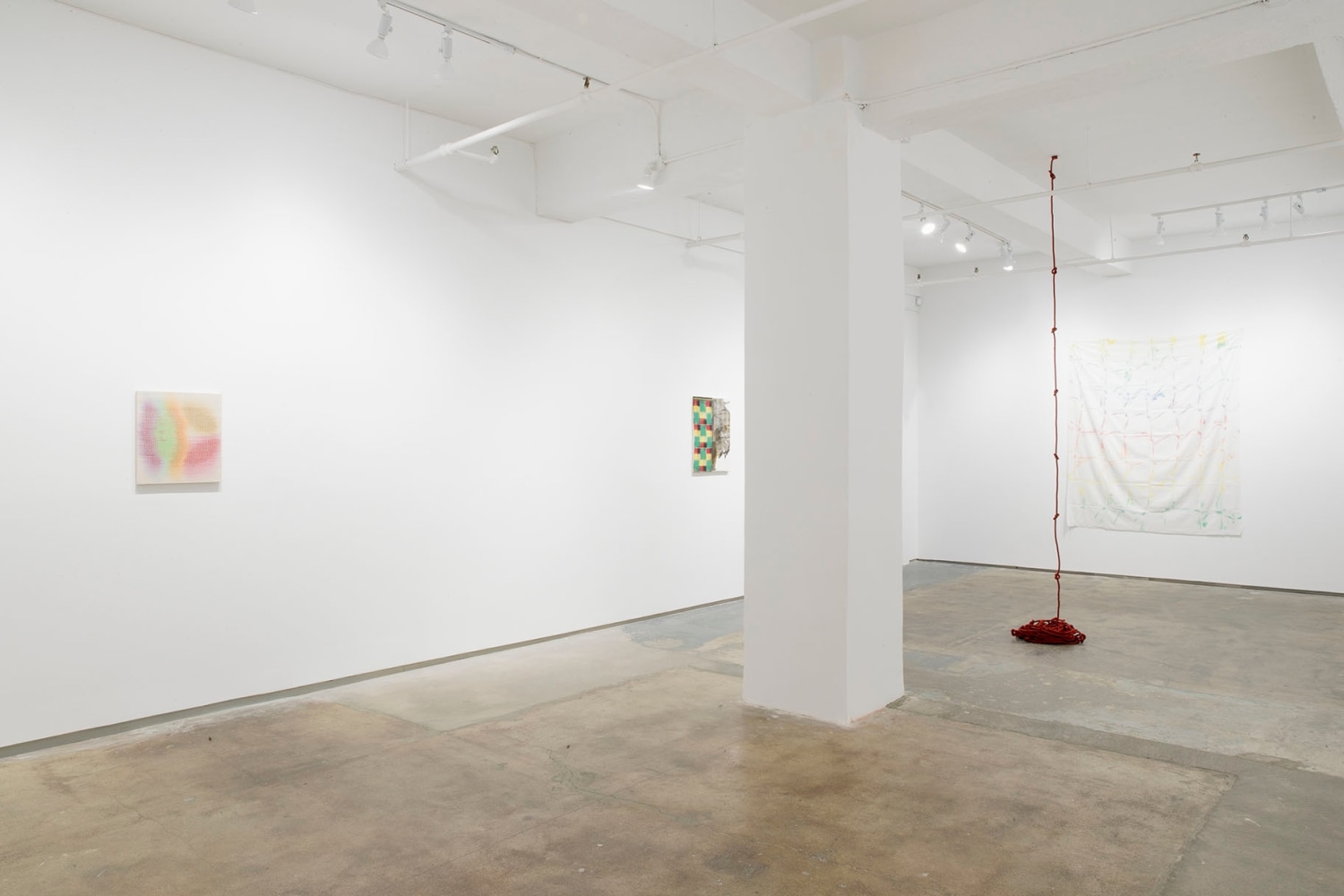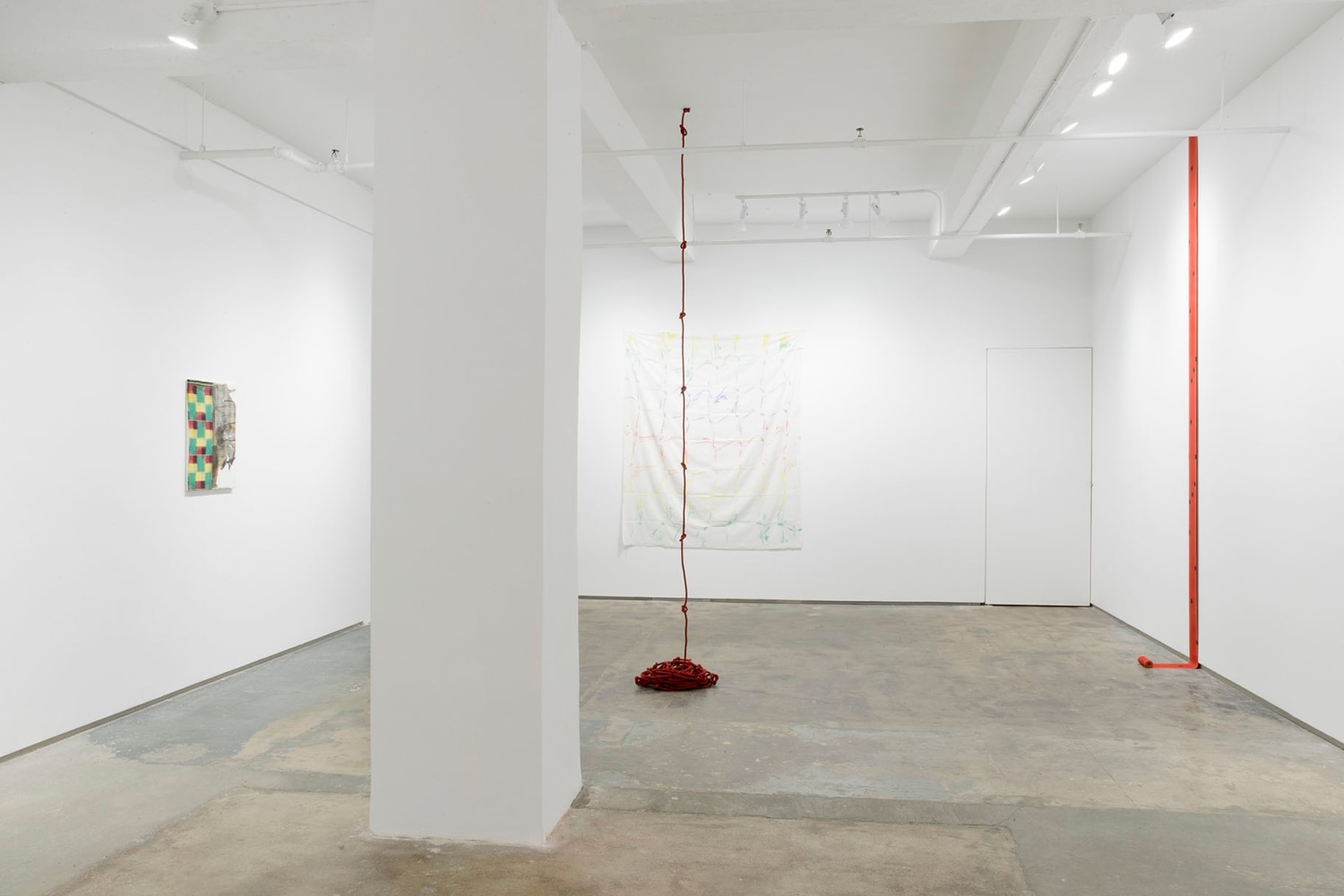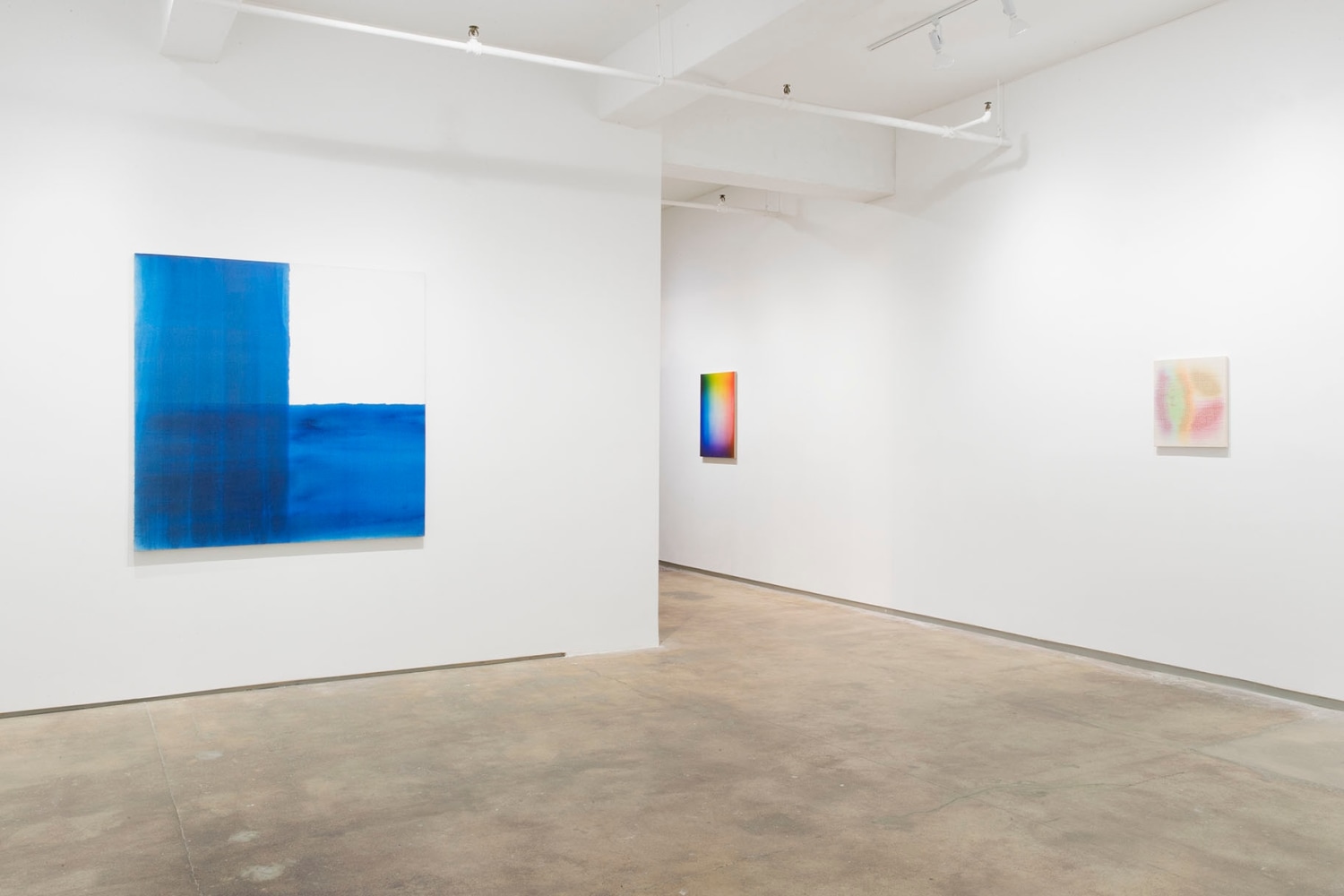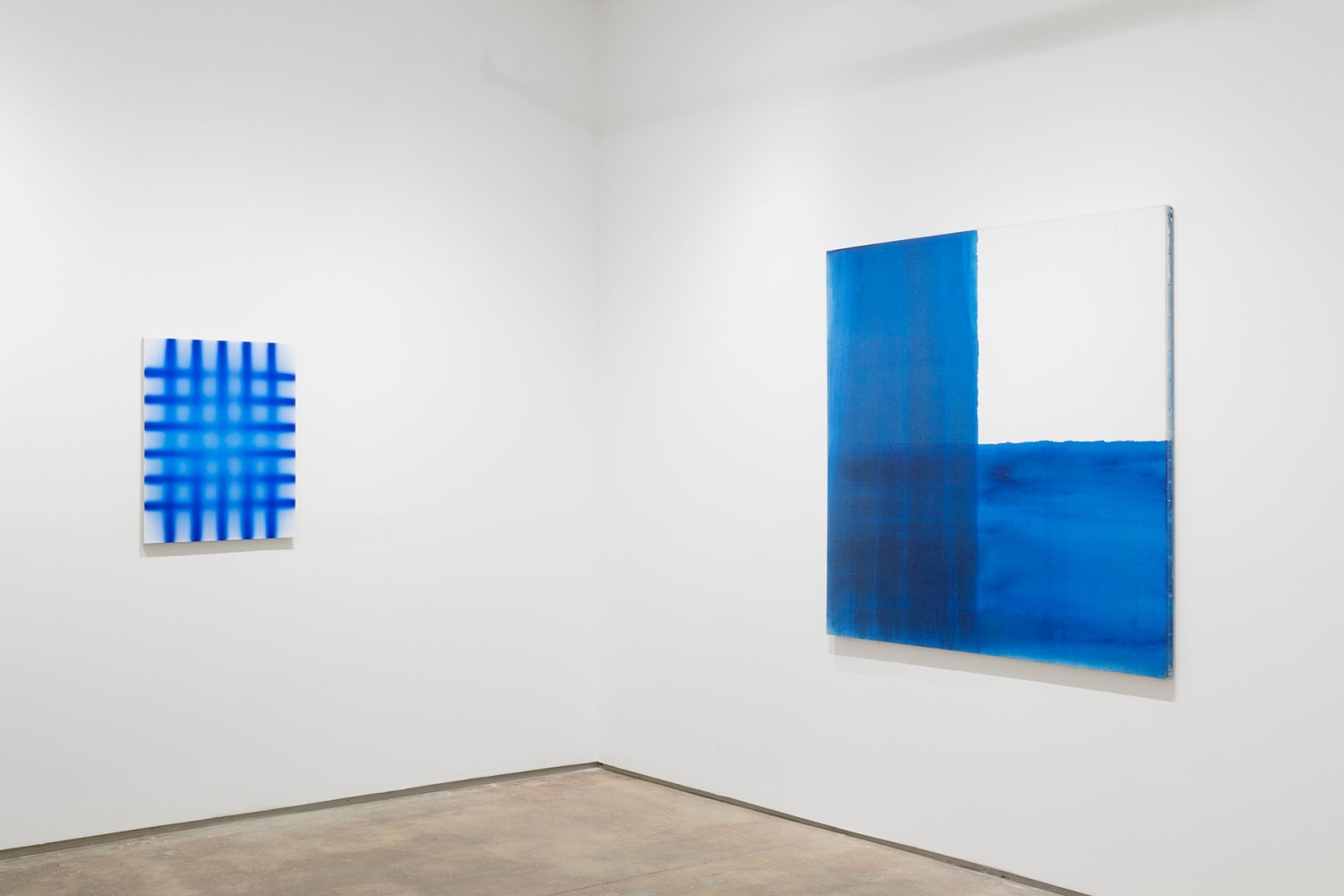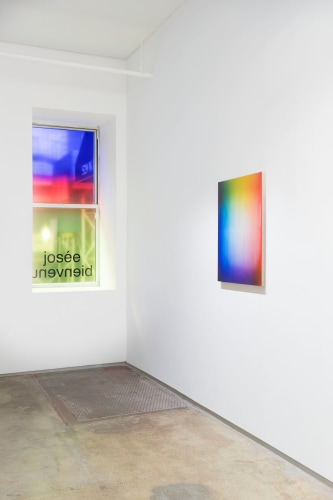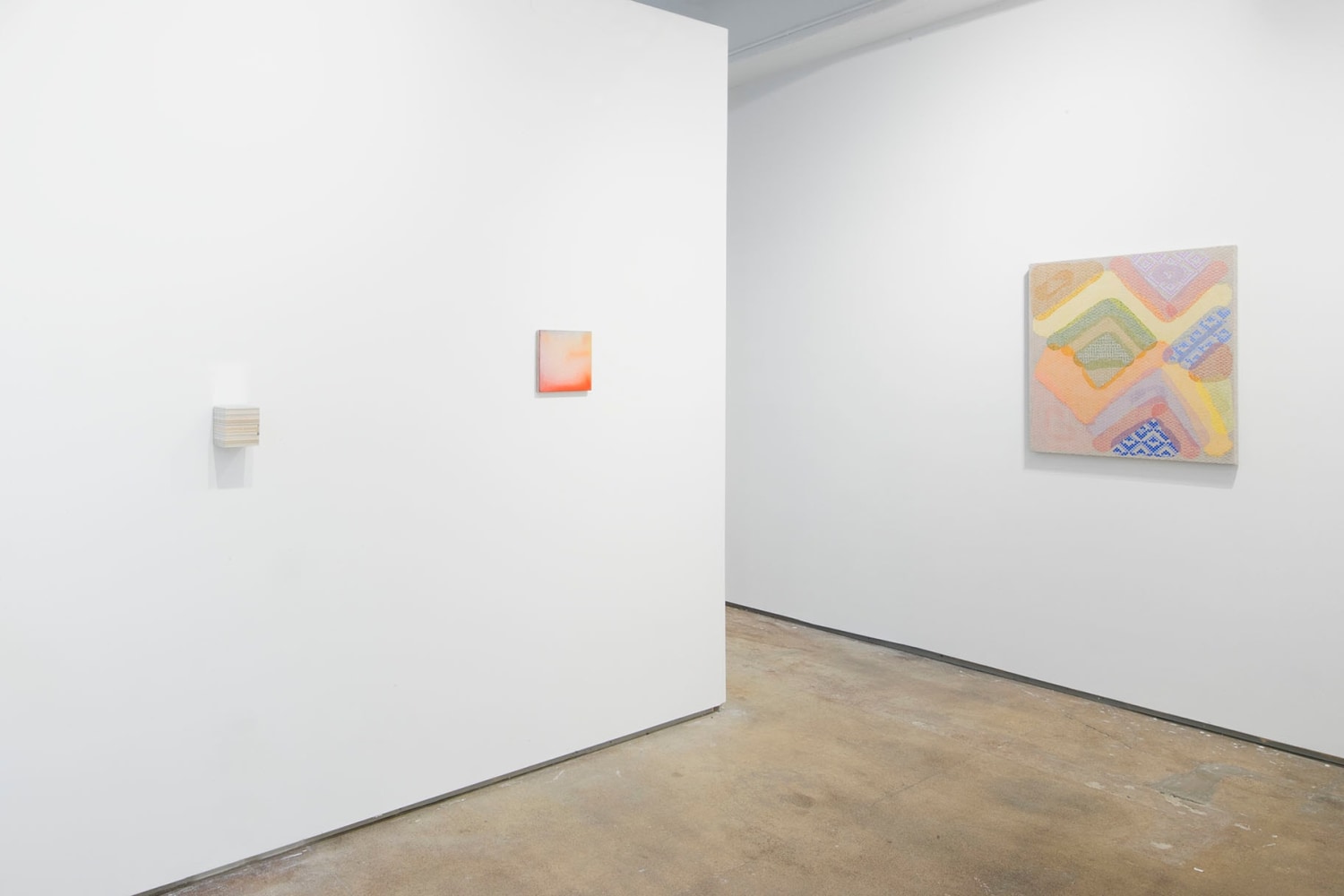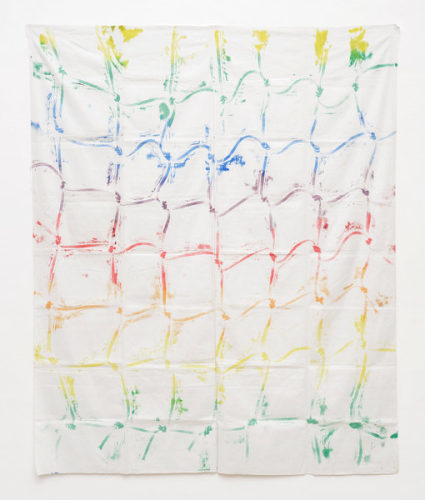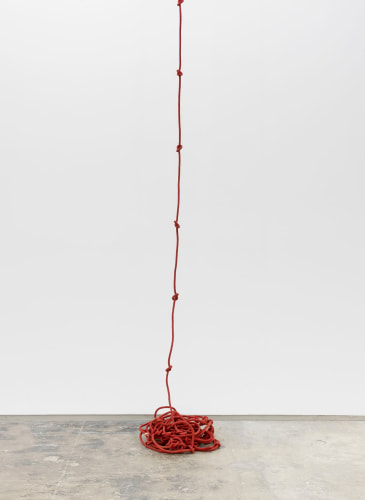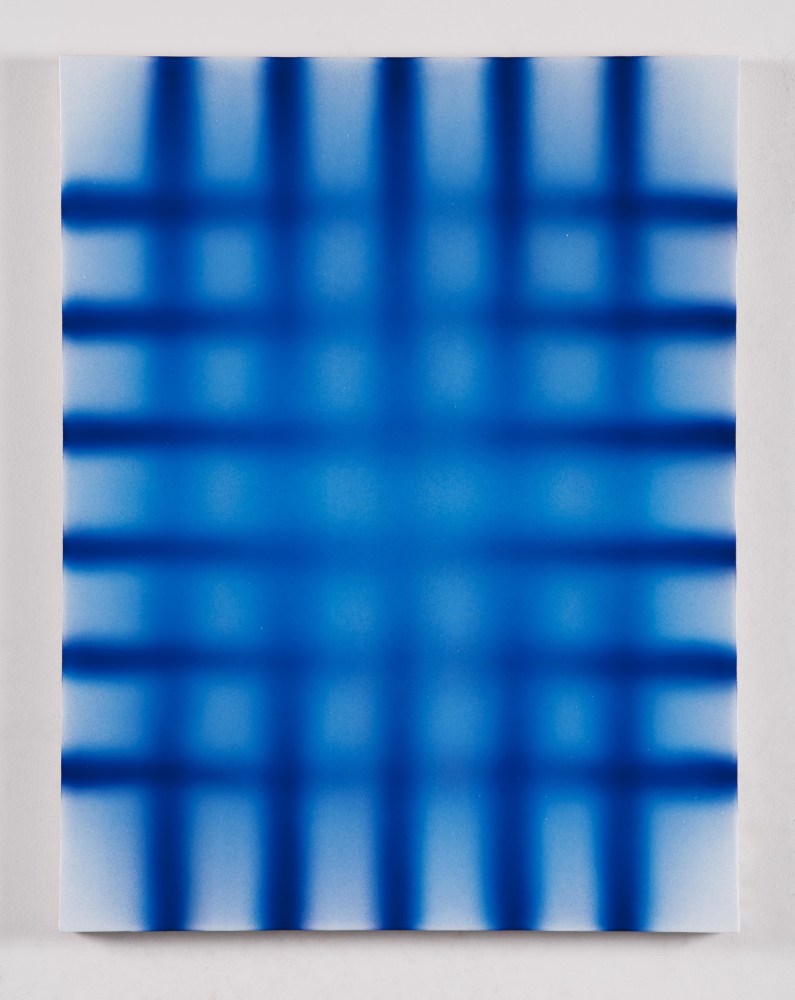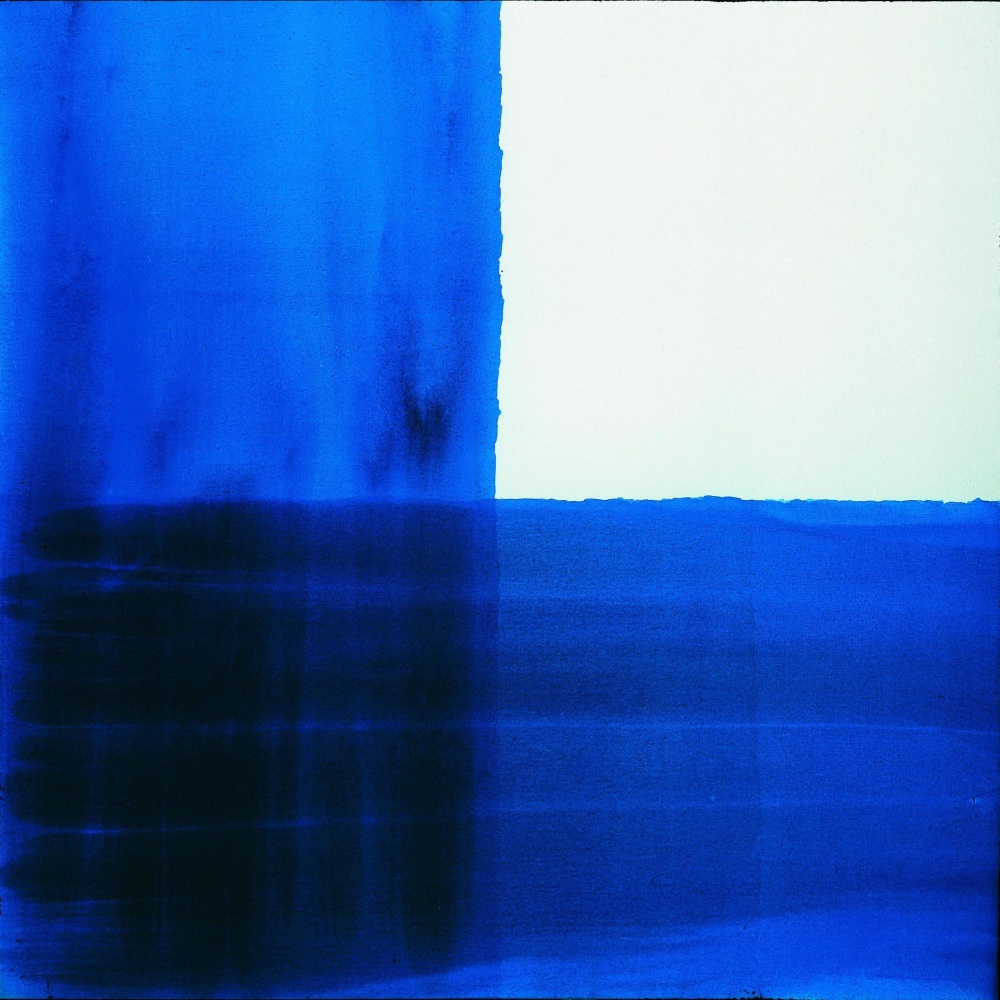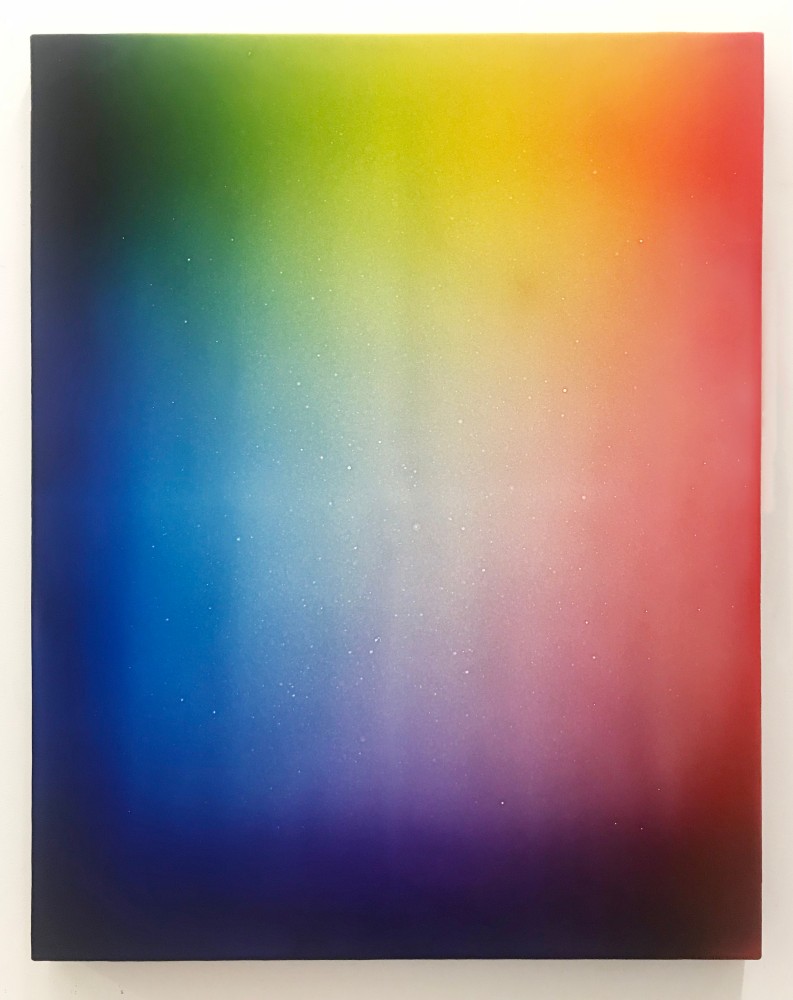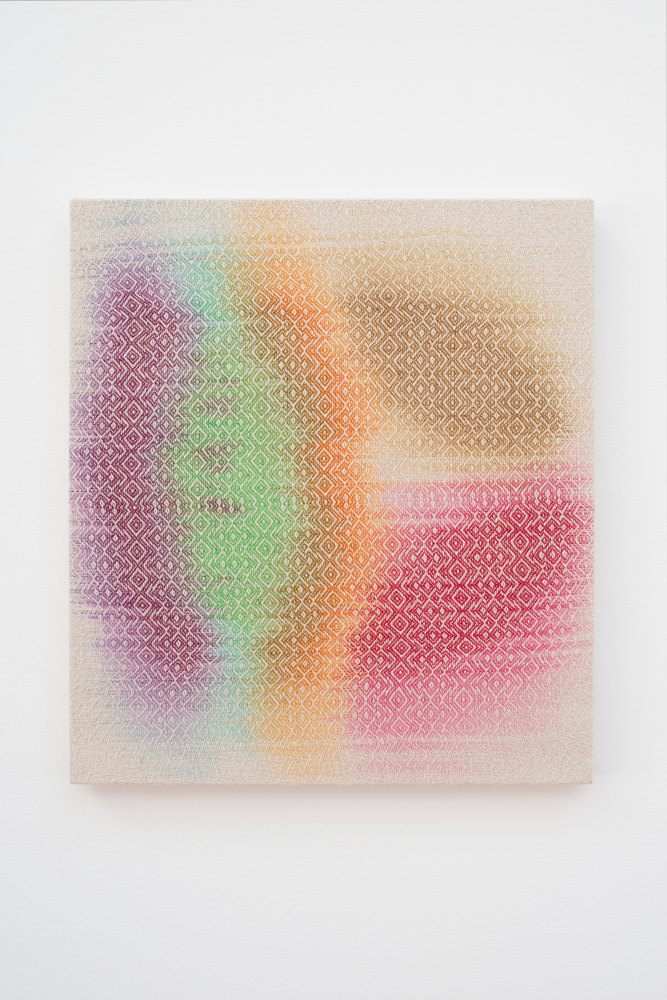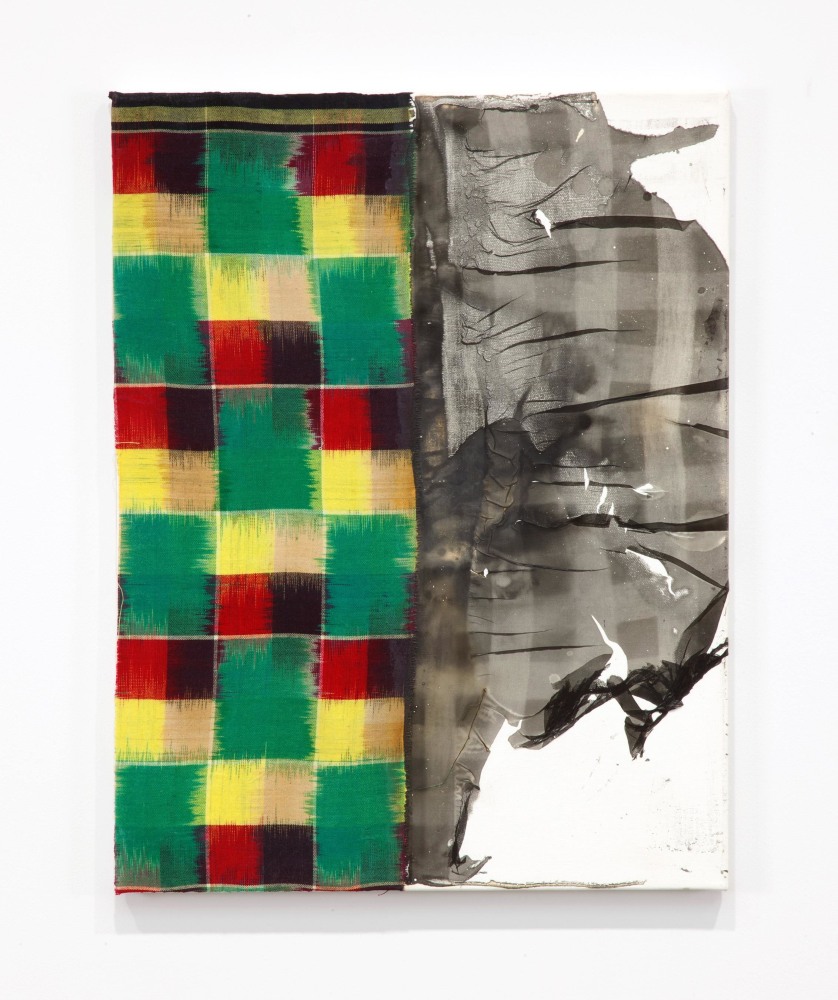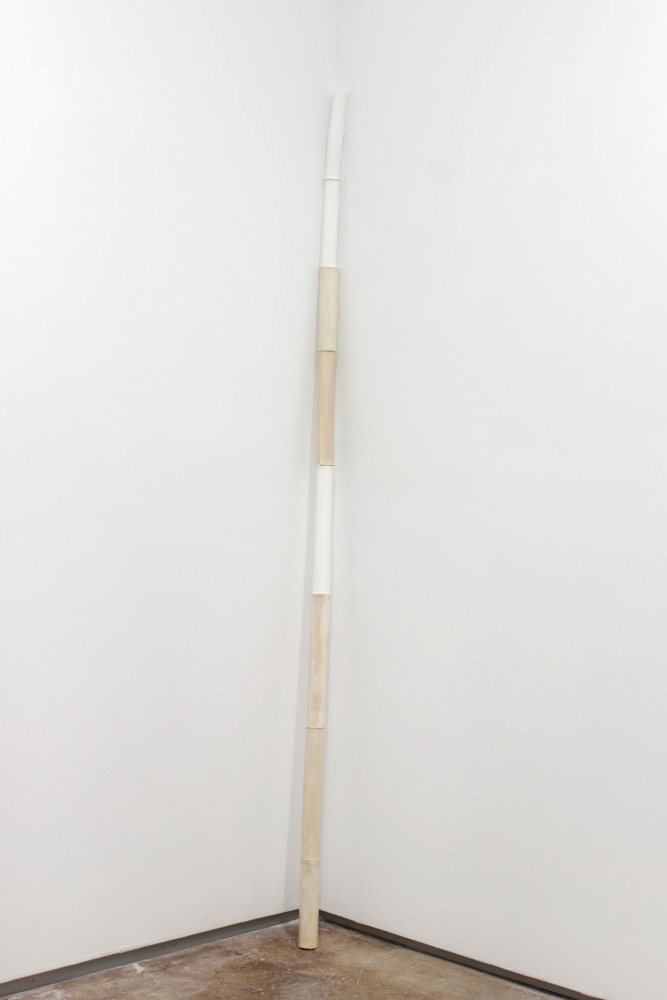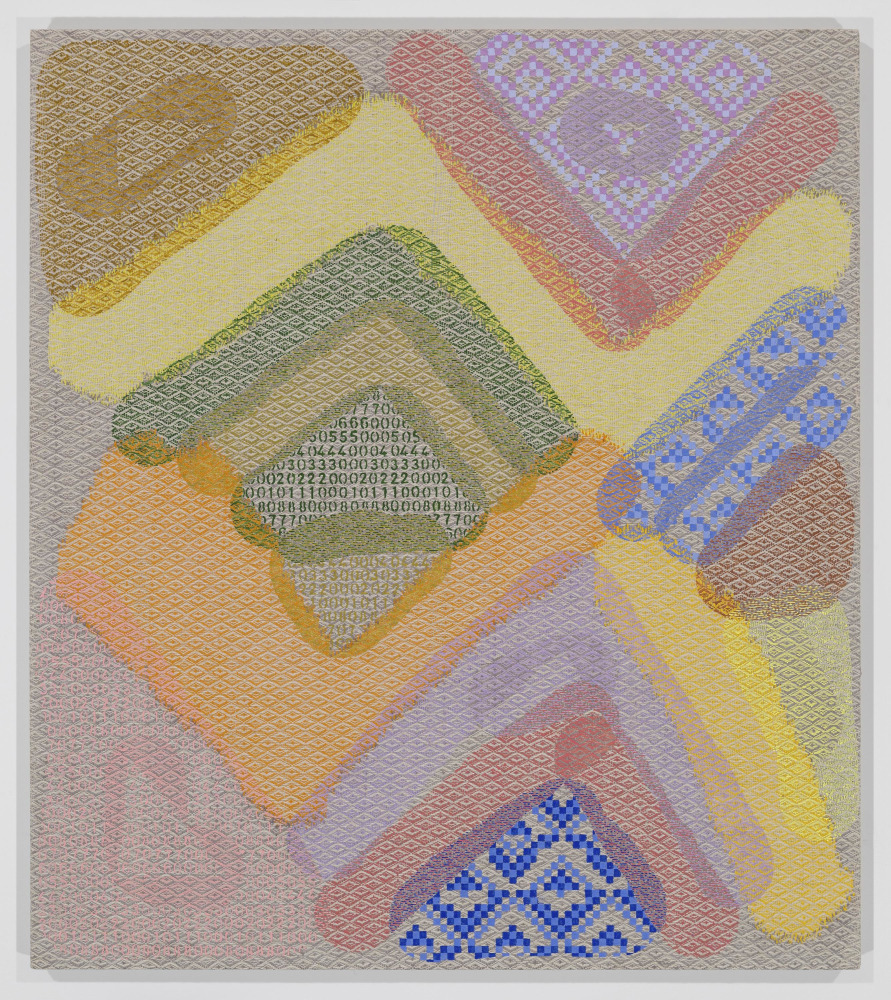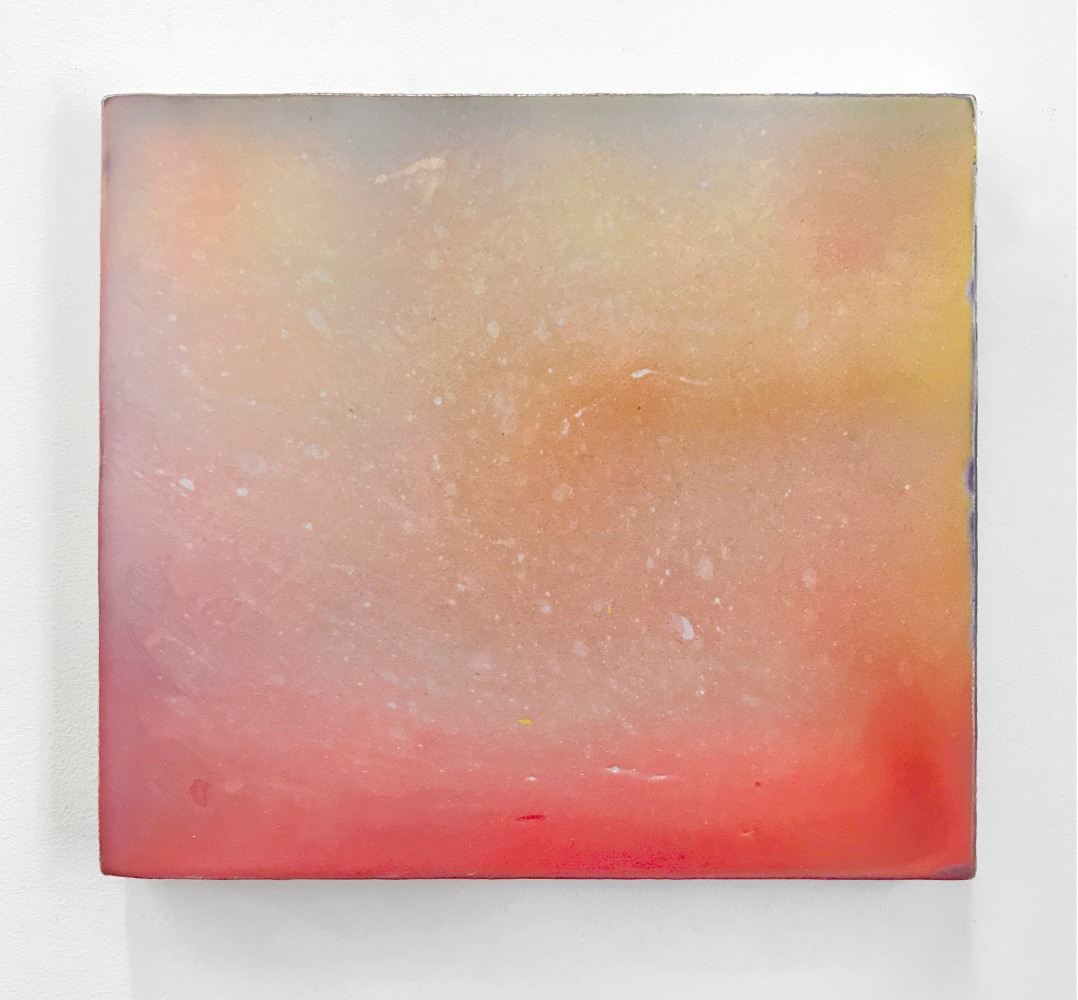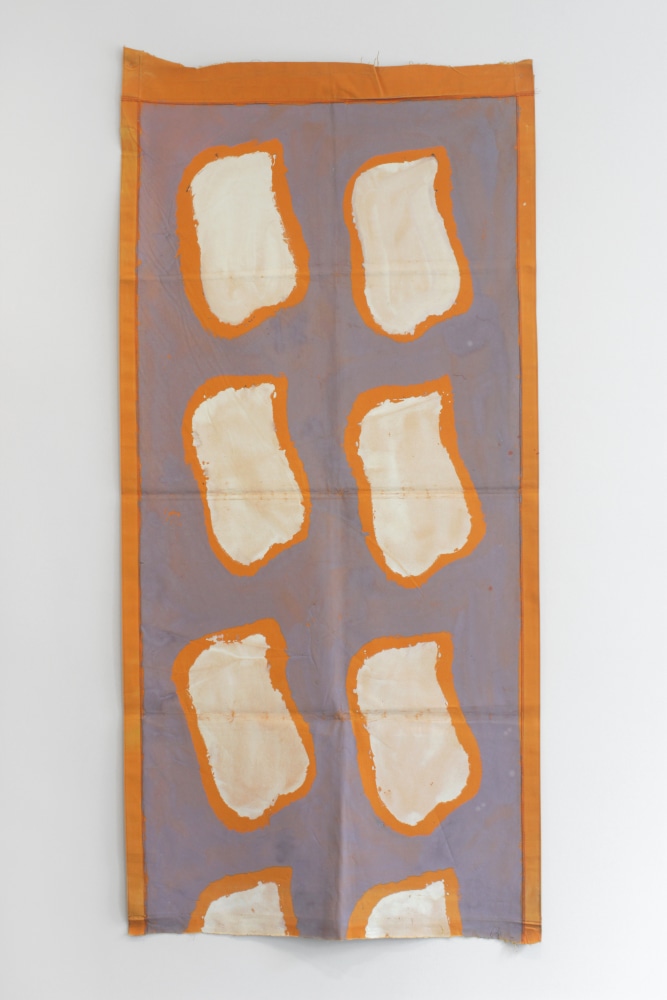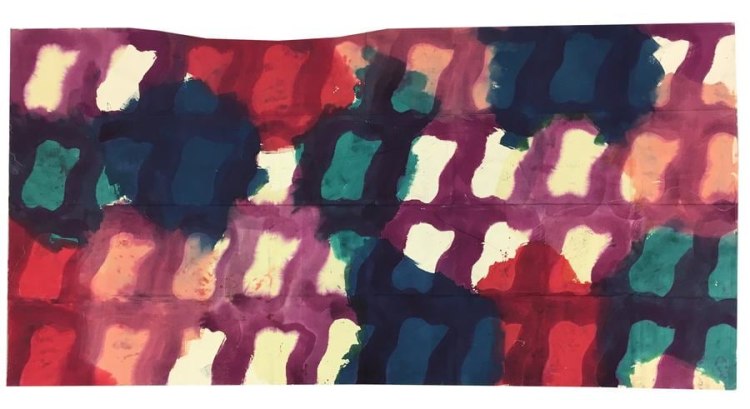Curated by Marie Maertens
June 21 - September 1, 2018
Opening reception: Thursday, June 21 from 6pm to 8pm
The Surface of the East Coast is a dialogue between two generations of artists, the duo Mark Barrow & Sarah Parke, Adam Henry and Lucas Knipscher, with the original Supports/Surfaces artists Marc Devade, Noël Dolla and Claude Viallat. The idea originated in New York, after witnessing the emergence of a generation of American artists whose practices offered striking similarities with the influential French movement Supports/Surfaces. The exhibition was first staged last summer at Le 109 Contemporary Art Center in Nice, the birthplace of Supports/Surfaces.
The starting point of Supports/Surfaces was the 1969 exhibition Painting in Question at Musee du Havre, which included artists such as Claude Viallat, Louis Cane, Daniel Dezeuze, Noël Dolla, Marc Devade and Patrick Saytour, most of them from the South of France. They proclaimed: “The object of painting is painting itself, and the exhibited paintings only relate to themselves.” In 1970, they officially presented themselves as the Supports/Surfaces group at the ARC - Musée d’Art Moderne de la Ville de Paris. Their reflection on the very essence of painting led them to question its materiality. Stretcher and canvas are dissociated each examined and exhibited separately. Once liberated, the canvas is free to unfurl, laying on the ground or even partially folded. Stretcher bars become ladders or ropes hanging from the ceiling or leaning bare against the wall. In line with the post-May 1968 spirit, the group interrogated notions of deconstruction and reconstruction, questioning the status of the bourgeois “apartment” painting hung on the wall. Supports/Surfaces came about in a decade of "clean-slate” anti-historical Utopias. This drove a will and a need to return to the fundamental properties of materials to deconstruct a canvas, reducing it to its essential structure to find new ways to “draw out” related geometric shapes - squares, rectangles, circles.
In the early 2000s, though evolving in a completely different aesthetic, geographic, political and economical context, young artists in New York had re-examined and dismantled the canvas to reconstruct it in ways that European critics and historians recognize very well. At the time, these artists may not have been aware of Supports/Surfaces, relying rather on the American canon - Frank Stella, Ad Reinhardt, Minimalism - and the Bauhaus for more familiar historical sources. But as Supports/Surfaces exhibitions began to take place more in the US and particularly in New York, new connections are being made and a real dialogue is developing between the artists. The affinities are clear: a similar deconstruction of the painting, or more generally the medium; the material itself, often ordinary or recycled, becoming the core of the work, engaging concepts of craftsmanship. The post-war isolation of painting from other media is also being called into question, as painting comes back as an experiment that can be integrated into works of architecture or with the environment.
Lucas Knipscher has been aware of Supports/Surfaces since art school through Raphael Rubinstein’s article The Painting Undone being circulated among students. From it, he took away the desire to dig deeper into materiality. His bamboo sticks made of ceramic question the concept of identity and authorship. Adam Henry, introduced to the movement through critic Saul Ostrow, found in Supports/Surfaces a shared approach to painting. In his rejection of narrative and his use of primary colors developed in prismatic combinations, he sets and subverts his own rules in a “malleable structure” onto which viewers are invited to develop projections of their own. For Mark Barrow and Sarah Parke, the “degree zero” of painting is performed through relationships developed between computer, printer, and loom. The decomposition and recomposition of their palette into pixels as a base material reimagines Seurat’s pointillism as a new focus on tonality in the age of 2.0. The notion of authorship is questioned as much as the status of the work between art, craft, painting and object.
Since 1967, Noël Dolla has been reflecting on how to rebuild painting, re-enriched with a sense of the infinite. He describes himself as a “child of Barnett Newman,” whose work he had discovered at the Grand Palais in 1972* - coming back to painting’s essentials to better advance it. Unlike the other members of the group, Marc Devade exhaustively exploits the possibilities of color, pushing their combinations “to a point where they could return to magma, to the chaos they come from.” Claude Viallat reaffirms the value of everyday materials, also testifying to the relationship of Supports/Surfaces with the New Realists, who preceded them. His ropes and nets unfold from ceiling to floor, proclaiming their total freedom.
The Surface of the East Coast will span across five venues in Manhattan: Emmanuel Barbault Gallery, Turn Gallery, OSMOS Address, Ceysson & Bénétière, and in Bushwick for a performance at The Chimney.
*Interview from the catalogue, The Surface of the East Coast, from Nice to New York, Editions Cercle d’Art.

